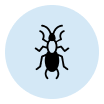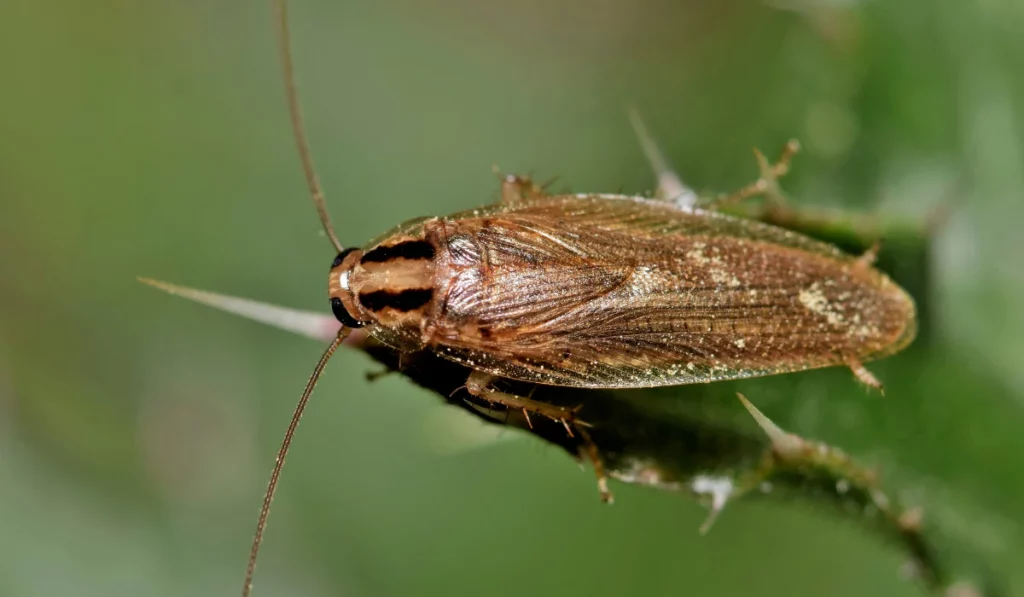What dangerous spiders might you find lurking in California’s diverse landscapes? The Golden State is home to the notorious black widow and the lesser-known desert recluse spiders.
Understanding these creatures could help residents and visitors alike stay safe. Keep reading to uncover more about these eight-legged inhabitants.
Key Takeaways
- California has several common poisonous spiders, like the Black Widow, Brown Recluse, Desert Recluse, Brown Widow, Yellow Sac, and Chilean Recluse.
- Black Widow and Recluse spiders are dangerous, with bites that can cause serious health problems and may need medical care.
- Poisonous spider bites can be avoided by checking dark areas, wearing gloves when cleaning, and sealing cracks to keep spiders out.
- Professional pest control services can help safely prevent and manage spider problems in your home.
Common Poisonous Spiders in California
When identifying venomous spiders in California, several common species in North America stand out for their bites and distinct markings.
Here’s a breakdown of the most poisonous spiders you might encounter in the Golden State:
Black Widow Spider

The Western Black Widow Spider is perhaps the most infamous resident of the California spider population.
With a glossy black color and an iconic red hourglass-shaped marking on the lower abdomen, its leg span can reach up to 1.5 inches, adding to its intimidating appearance.
Adult female Black Widows are the ones to watch out for. Their bites may need medical attention due to the neurotoxins in their venom. These can cause muscle pain, cramps, nausea, and, in severe cases, breathing difficulties.
Brown Recluse Spider

The Brown Recluse Spider is not native to California, but still worth noting due to occasional encounters. The violin-shaped marking on their thorax distinguishes these spiders. They range in color from tan to dark brown and have long legs. Their bites can lead to serious skin necrosis, where the tissue around the bite begins to die.
Desert Recluse Spider
The Desert Recluse Spider thrives in the arid regions of California. Like its relative, the brown recluse, it also features a violin-shaped marking. Its habitat includes deserts and dry environments, often under rocks or logs. Bites from this spider can result in pain and sometimes severe reactions, especially if left untreated.
Brown Widow Spider

The Brown Widow Spider is a cousin to the Black Widow but has its characteristics. It features an orange or yellow hourglass marking, and the body is often brown with a mottled pattern. Though they’re similar in appearance, this spider is typically less aggressive. Its bites are generally less toxic than those of black widows.
Yellow Sac Spider

The Yellow Sac Spider stands out due to its pale yellow or light green color. These spiders are small, yet they pack a punch when they bite. Females often lay their egg sacs in hidden areas. While they are not among California’s most harmful spiders, their bite can cause skin irritation, itching, or minor necrosis.
Chilean Recluse Spider
The Chilean Recluse Spider is one of the most dangerous among recluse species. It is rare in California, but its presence has been reported in isolated cases. Bites can lead to systemic symptoms, including fever and vomiting. Its venom can cause significant harm to tissues, resulting in lesions and necrosis.
What to Do If You Encounter a Poisonous Spider
Awareness helps in preventing these species of spiders from biting humans. To reduce the risk of encounters in commonly infested areas, follow these proactive steps:
- Look for spiders in dark, quiet areas like garages and basements.
- Wear gloves and long sleeves when cleaning these spaces.
- Check shoes and cushions before using them.
- Seal cracks and install screens to keep spiders outside.
In the event of a venomous spider bite, taking immediate and informed action is critical for proper treatment and recovery.
Follow these steps to respond effectively:
- Contact emergency services if severe symptoms appear.
- Describe the spider’s appearance and bite location to medical personnel.
- Request antivenom if necessary, as it may help counteract the venom effects.
- If possible, capture the spider safely or take a picture for identification.
How to Keep Poisonous Spiders Out of Your Home
To keep your home safe from spider infestations and Black Widow bites, use these targeted DIY methods:
- Apply store-bought spider repellents in dark areas where spiders typically hide, such as basements, attics, and behind furniture.
- Move wood piles away from your home to reduce spiders seeking shelter nearby.
- Clean areas prone to spider webs, like crawl spaces, closets, and attics.
- Check and repair window and door seals to block potential spider entry points. Ensure there are no gaps or cracks that could allow spiders inside.
Choose Professional Spider Control Services
Don’t risk unwanted encounters with California’s most dangerous spiders. At Simple Pest Management, we offer expert pest control, targeting the spots where these venomous arachnids hide.
Our professionals provide a thorough inspection and precise treatments, ensuring your home stays safe—without the guesswork of DIY solutions. Contact us today for a free estimate.








